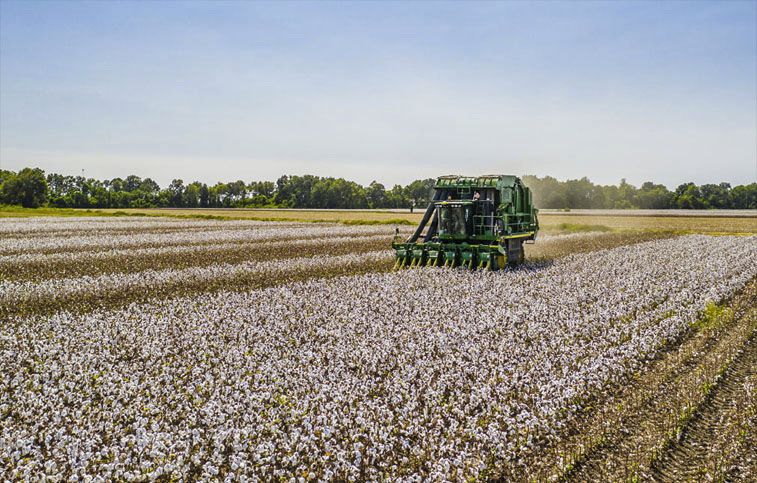A quarter of the world’s fabric consumption is cotton. Since the post-pandemic recovery began, the price of this raw material has fluctuated enormously. Cotton prices reached a new high due to a resurgence in demand caused by supply constraints. However, since its peak in 2022, the market value of cotton has decreased by over 40%. Moreover, if projections for the next few years come true, the price for a bale of cotton could drop even lower.
This year, the cost of producing cotton has increased due to adverse weather conditions, such as a drought in the United States and floods in Pakistan and India. Despite those events, India is expected to increase its production by 12% during the upcoming season. China, on the other hand, has become the biggest cotton producer in the world in the past year, while India has decreased the size of its cotton fields due to the pandemic. Nonetheless, China’s status may be temporary, as India expects to regain its position as the world’s leading cotton producer.
In 2026, cotton production is anticipated to exceed 28 million tons for the first time. In addition, 75% of that amount will originate from the fields of only five nations: India, China, the United States, Pakistan, and Brazil. The current volatility in the market is causing cotton warehouses to fill up while demand for the material is declining as a result of recession fears.
The U.S. Department of Agriculture is aware of this, and they have already said in their latest report that cotton prices may continue to decline in the United States. The International Cotton Advisory Committee has decided to stop making cotton price forecasts because the market is too unpredictable. “Cotton’s future in the coming months is uncertain,” they said in their most recent report, which also stated that the fear of a recession has the same effect on demand as an actual recession.
The same pattern can be seen in cotton contracts traded on the New York Stock Exchange, which serves as the market’s primary reference. The price of one bale has decreased more than 20% year-over-year to below $74 per unit. This decline is partially a result of a strong dollar value. In fact, the currency’s strength has affected the values of most commodities that are traded in dollars. However, the dollar’s strength is not the only factor affecting prices, as higher interest rates have made freight transportation more expensive, which also accounts for a big chunk of cotton prices.
Pakistan has historically always been an exporter of various goods, but the country had to start importing materials after a series of floods to meet the demand of its industries. Robert P. Antoshak, a Bloomberg analyst, says that the situation in Pakistan has contributed to the decline of cotton prices, as the country’s cost to produce cotton yarn is much higher than before.
October is on track to be the most bearish month for cotton since 1986. Analysts are uncertain whether the textile industry will be able to reduce operating costs due to a decrease in the price of raw materials, or whether poor projections of textile consumption will prevent the industry from taking advantage of the situation. Furthermore, polyester and wool are important raw materials in the textile industry, each with its own scenario that could rival the demand for cotton.
Nicholas Gentile, the chief financial officer of commodity investment firm NickJen Capital Management, says that it is clear that retailers’ high inventory levels have made the slowdown in consumer demand hurt even more. Gentile also said that “increased interest rates are likely to reduce how much consumers spend on clothes.”
Plexus Cotton, one of the world’s largest suppliers of virgin cotton, estimates that more than 13 million bales of cotton are stored in the United States alone, still awaiting a buyer. In their most recent October report, they stated, “Mills are overstocked and operating at a slower pace than usual.”
Walter Kunisch, head of commodity strategies at Hilltop Securities, acknowledges that there is also a supply issue in addition to a demand issue. “The cotton market is ignoring the obvious structural supply deficit in the United States,” the expert says. “The drought in North Carolina, South Carolina, and Texas, where the majority of the country’s cotton production is concentrated, has created problems for the supply chains of cotton producers.”












